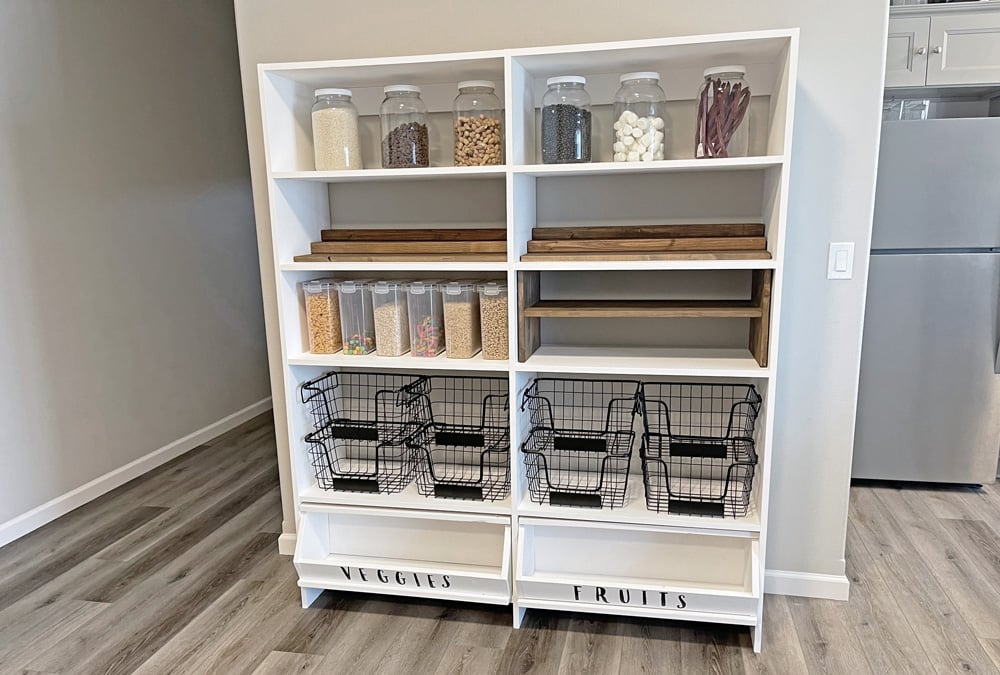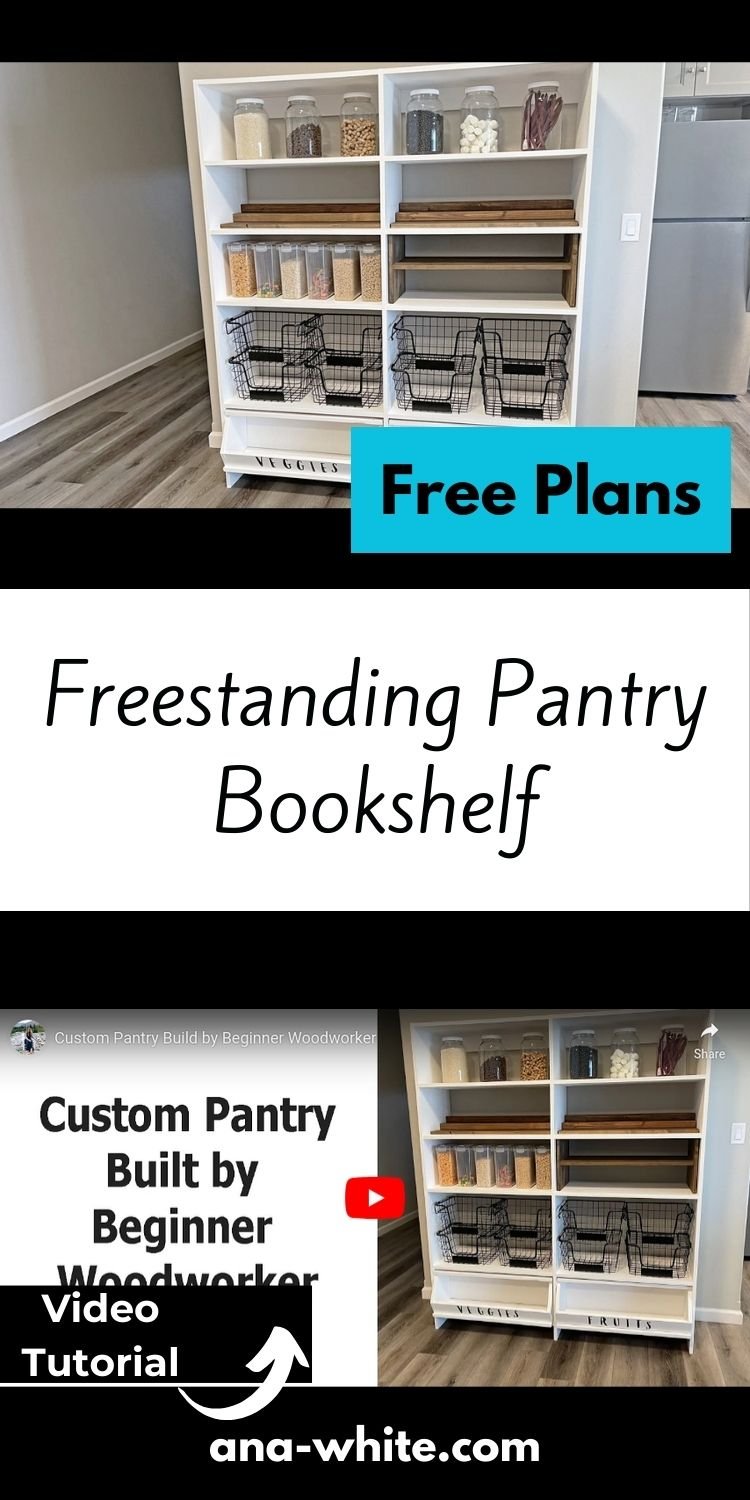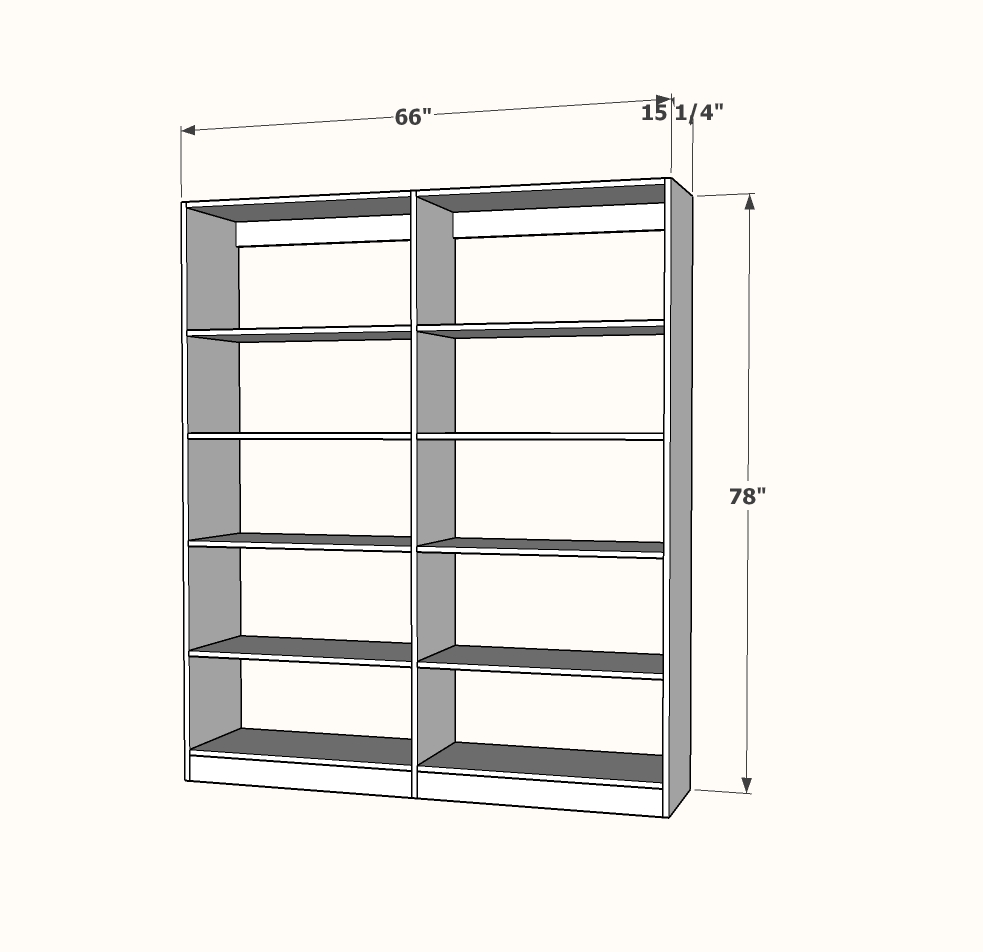
Build your own custom pantry shelf and customize it for your needs! You can have a pantry in plain sight with this beautiful organized system. Free step by step plans from Ana-White.com
Pin for Later!


Preparation
- 7 - 3/4" thick by 15-1/4" wide white melamine shelving boards, 8 feet long
- 100 - 1-1/4" coarse thread pocket hole screws
- 3 - 8' long 1x4 boards, prime and paint white to match melamine
- Recommended - 1/4" plywood painted white for back and 3/4" brad nails or staples for attaching
- 3 - shelving boards cut at 78" long - sides
- 12 - shelving boards cut at 31-1/2" - shelves, drill three 3/4" pocket holes on each cut end
- 6 - 1x4 @ 31-1/2" long, drill 3/4" pocket holes on ends and along top edges for attaching to underside of shelves
TIP: When drilling pocket holes on the shelving ends, offset all pocket holes drilled slightly to the right - this way you won't end up with intersecting screws at the center of the pantry.
For long term durability and more professional results, I recommend using a pocket hole joinery system for wood joints. Here is a video with tips for using a pocket hole jig:
Instructions
Step 1
Drill 3/4" pocket holes, three per end, on all shelving boards. TIP: Offest the pocket holes slightly to the right on ALL of the shelving board ends, to avoid intersecting screws at the center in later steps.
Attach shelves at the top and bottom as shown, the center shelves can be placed at different heights to accommodate different storage needs.
Use 1-1/4" coarse thread pocket hole screws for assembly.
Step 3
Reinforce the shelving by adding 1x4 "bay supports" under the bottom shelf and at the top. Attach also to the underside of the shelves with 3/4" pocket holes and 1-1/4" pocket hole screws.
For a higher quality project and more support, add 1/4" plywood paneling to the back with 3/4" staples or brad nails.














